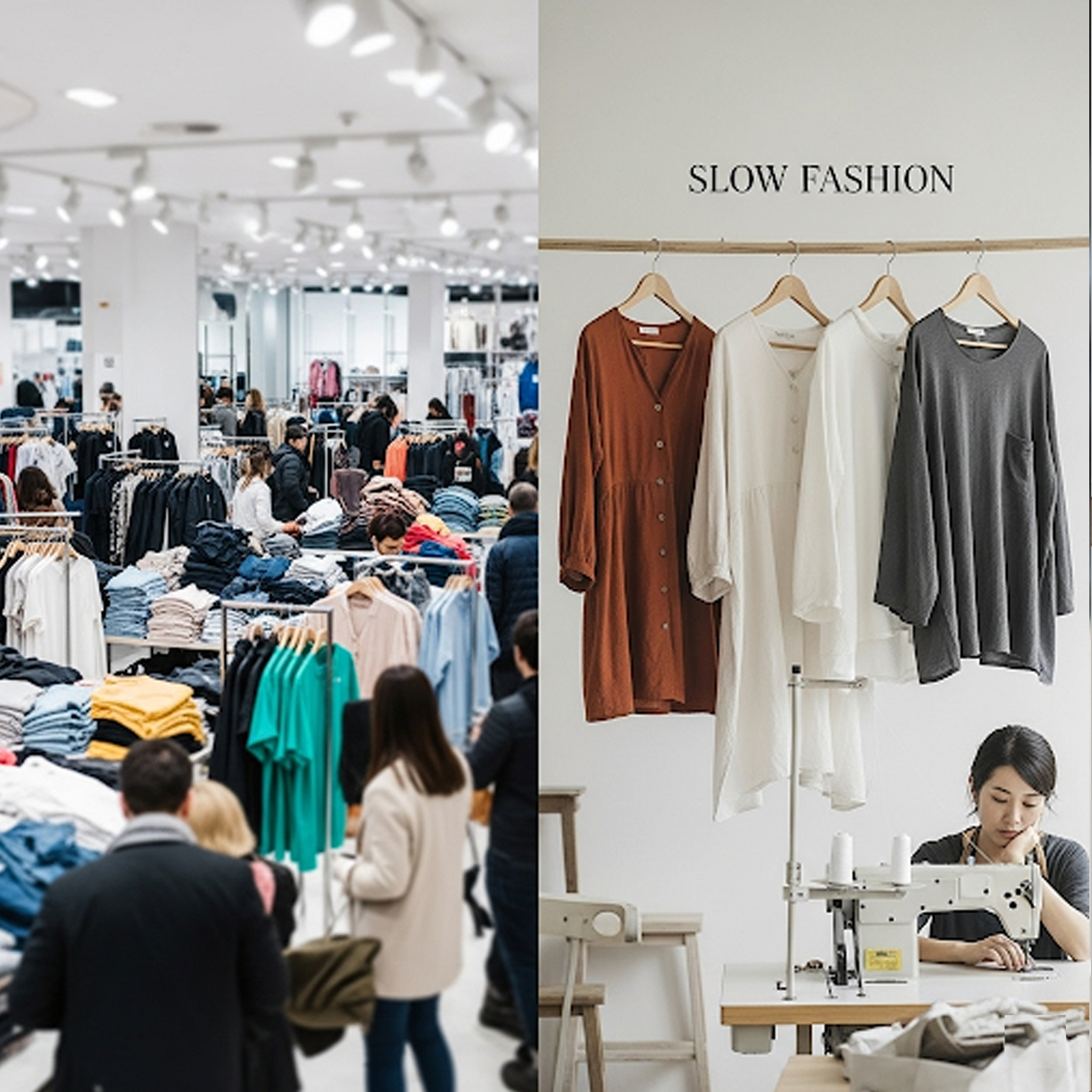No products in the cart.: $0.00
Fast Fashion vs. Slow Fashion: Making Conscious Choices

The fashion industry operates on a spectrum, with two dominant models shaping how clothes are produced and consumed: fast fashion and slow fashion. These two approaches represent vastly different philosophies regarding design, production speed, quality, environmental impact, and consumer behavior. Understanding the distinctions between them is crucial for making more conscious choices about our wardrobes and contributing to a more sustainable and ethical fashion system.
Fast fashion is characterized by its rapid production cycles, trend-driven designs, and affordable prices. The goal is to quickly translate runway trends and celebrity styles into mass-produced garments that are available to consumers at low cost. This model relies on high volumes of production, often utilizing global supply chains with less stringent environmental and labor regulations to keep prices down. New collections are frequently introduced, encouraging consumers to buy more and discard clothing quickly to stay up-to-date with the latest trends.
The appeal of fast fashion lies in its accessibility and affordability. It allows consumers to experiment with different styles without a significant financial investment and to constantly refresh their wardrobes with new items. However, this convenience comes at a significant cost. The relentless pursuit of low prices often leads to compromises in quality, the use of cheaper and less sustainable materials, and pressure on manufacturers to cut corners, which can result in poor working conditions and low wages for garment workers.
Environmentally, fast fashion has a substantial negative impact. The high volume of production requires vast amounts of natural resources, including water and raw materials like cotton, which can be grown using harmful pesticides. The dyeing and finishing processes often involve toxic chemicals that pollute waterways. Furthermore, the short lifespan of fast fashion garments contributes to massive textile waste, with millions of tons of clothing ending up in landfills each year. The energy consumption and carbon emissions associated with production and transportation also contribute to climate change.
In contrast, slow fashion is an approach that emphasizes quality, longevity, ethical production, and mindful consumption. It is a conscious reaction against the fast-paced, disposable nature of the fast fashion industry. Slow fashion brands typically focus on creating timeless designs that are not dictated by fleeting trends, using high-quality and sustainable materials, and employing fair labor practices.
The principles of slow fashion extend to consumer behavior as well. It encourages individuals to buy fewer, better-quality items that will last longer, to take care of their clothes, to consider secondhand options, and to support brands that align with their values. The focus shifts from quantity to quality, from impulsive purchases to thoughtful investments.
One of the key aspects of slow fashion is transparency in the supply chain. Brands committed to slow fashion often provide information about where their materials come from, how their garments are made, and the working conditions of the people involved in the production process. This transparency allows consumers to make more informed choices and hold brands accountable for their social and environmental impact.
Investing in slow fashion often means paying a higher price for clothing upfront. However, the long-term value of well-made, durable garments can outweigh the initial cost. These items are likely to last longer, reducing the need for frequent replacements and ultimately saving money in the long run. Moreover, supporting slow fashion brands contributes to a more ethical and sustainable industry, where workers are treated fairly and the environmental impact is minimized.
Making the transition from fast fashion to slow fashion is a gradual process that involves a shift in mindset and shopping habits. It might start with being more mindful about purchases, asking questions about the origin and production of clothing, and opting for higher-quality items when possible. Exploring secondhand and vintage stores is another great way to embrace slow fashion principles. Learning basic repair skills can also extend the lifespan of our existing clothes.
Ultimately, the choice between fast fashion and slow fashion reflects our values and our understanding of the true cost of our clothing. While fast fashion offers immediate gratification and affordability, slow fashion represents a more sustainable, ethical, and ultimately more fulfilling approach to our relationship with what we wear. By making conscious choices and supporting brands that prioritize people and the planet, we can contribute to a more responsible and resilient fashion future.



